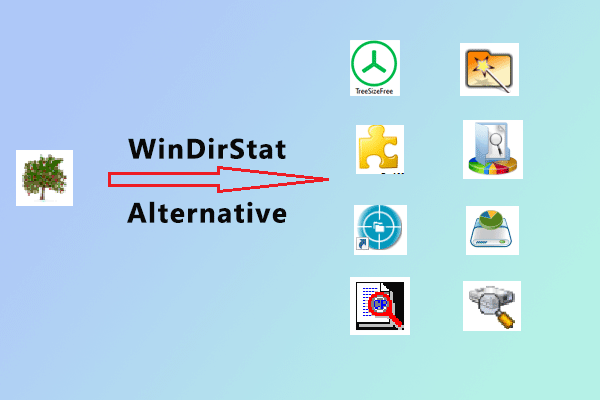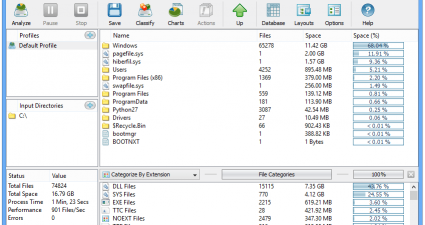

Please note, JDiskReport is a Java-based tool, so you'll need Java installed before it will work. With JDiskReport you can scan either a selected tree directory or your C drive.

JDiskReport displays data in different viewable formats, which you can switch between.

While selecting "Types" shows you which file types are consuming the most space.Īnd a range of useful configuration options allow you to do everything from excluding particular folders from the report, to defining precisely how you'd like the charts to look. JDiskReport is a free Java based app, which displays data such as the size, capacity, and other parameters of your files, folders and directories. Clicking "Top 50" reveals the 50 largest files in the tree you're examining, for instance. The program does offer alternative views on your files, though. You'll have your own space hogs, of course, but JDiskReport should still expose them in just a few seconds. Why? Clicking any folder on the pie chart allows you to drill down, and in a click or two we found that the main culprit was a VirtualBox virtual machine setup, which required 30.1GB all on its own. So immediately we could see that, for instance, the Users folder was gobbling up the most hard drive space on our test system, at 69.1GB. Then you see the basic report, which shows you an Explorer-type view of your folders on the left, and a pie chart on the right revealing how much each one is taking up. This all starts by pointing the program at the folder tree you'd like it to examine, and it then spends a moment analysing your files (and only a moment, really - it's quite speedy, considering what the program has to do). But now when I check my disk space (df): Filesystem Size Used Avail Capacity Mounted on /dev/ada0p2 16G 9.2G 5.1G 64 / devfs 1.0k 1.0k 0B 100 /dev procfs 4.1k 4.1k. This is a good place to find large and obsolete files.JDiskReport is an excellent free Java tool which will scan your hard drive and provide a host of useful information about how its space is being used. I recently upgraded to the 13.0-RELEASE and everything went fine. These tables show the list of 100 largest files, least recently modified files, and most recently files. You can see which file type consumes space and how many files of a given file type you have. The type distribution statistics are collected from the file extensions that exist on the analysed file tree. The modification distribution views provide you with information about when how much space and how many files have been modified. All other properties like size, date, owner, files, folders, subfolders are listed too. That is necessary as this report is a kind of search for the longest paths. The path column displays the location of the item on the storage. My reasons for this decision have been posted on Reddit, although I can not tell you how. Delete all of the files in the CBS folder. As I use macOS as my daily driver, JDiskReport does not work. Scroll down to find the Windows Modules Installer service and double-click on it. In 'Show number of files' mode, you see how many files are large, of medium size, and small. You can sort the report both by the longest path and longest file name. Click your Start Button, type services and hit Enter to open the Services app.

If you are in 'Show file size' mode, you can see how much space is consumed by large, medium sized, and small files. Look at these views to check whether the size distribution is what you expected it to be. The size distribution views help you to learn more about the different file sizes that exists on your hard disks. You can switch to the table view and toggle the display of files to get more detailed information about a folder. The size pie chart is probably the best to find monster files and folders. The size perspective shows you how much space the files and folders consume on your disk drives. Also, JDiskReport collects a list of 100 largest, oldest, and newest files. You can choose to either show the file size or the number of files. JDiskReport provides different perspectives about your disk drives: absolute and relative sizes, size distribution, distribution of modification dates, and distribution of types.Įach perspective includes a pie chart, a bar chart, and a details table.


 0 kommentar(er)
0 kommentar(er)
